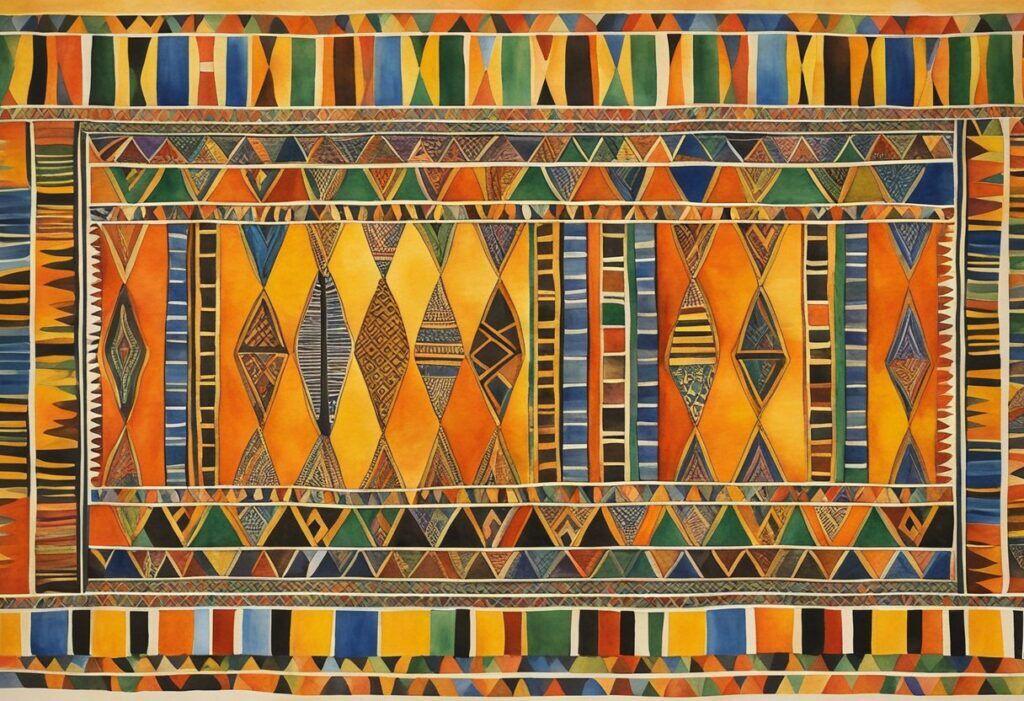Unveiling teh heritage and Symbolism of Kente Cloth: A Timeless Expression of African Tradition
Table of Contents
- 1 Unveiling teh heritage and Symbolism of Kente Cloth: A Timeless Expression of African Tradition
- 1.1 Meta Title: Kente Cloth: Unveiling the Tapestry of African Heritage and Symbolism
- 1.2 Meta Description: Explore the rich history, intricate symbolism, and cultural importance of Kente cloth, a timeless expression of African tradition.
- 1.3 H1: Unveiling the Heritage and Symbolism of Kente Cloth: A Timeless Expression of African Tradition
- 1.4 Introduction
- 1.5 H2: Historical Roots of Kente Cloth
- 1.6 H3: The Art of Kente Weaving
- 1.7 H4: Symbolism of Kente Cloth
- 1.8 H5: Cultural Significance of kente Cloth
- 1.9 H6: Symbol of Cultural Identity
- 1.10 H7: Kente Cloth in Modern Culture
- 1.11 H8: Case Study: Kente Cloth in Cultural Festivals
- 1.12 Conclusion
Meta Title: Kente Cloth: Unveiling the Tapestry of African Heritage and Symbolism
Meta Description: Explore the rich history, intricate symbolism, and cultural importance of Kente cloth, a timeless expression of African tradition.
H1: Unveiling the Heritage and Symbolism of Kente Cloth: A Timeless Expression of African Tradition
Introduction
Kente cloth, a vibrant and intricate fabric, is a testament to the rich cultural heritage and artistic prowess of West Africa. Its vibrant colors, bold patterns, and profound symbolism have made it an enduring symbol of African identity, cultural pride, and artistry. This article delves into the captivating world of Kente cloth, exploring its ancient roots, cultural significance, and the stories woven into each thread.
H2: Historical Roots of Kente Cloth
The origins of Kente cloth can be traced back to the Ashanti people of present-day Ghana. The word “Kente” means “woven cloth” in the Twi language, and it is believed that the craft was first developed in the 17th century by the Ashanti weaver, Kente-Nwene-Anim.
Initially used exclusively by royalty and high-ranking members of society, Kente cloth gained wider popularity in the 18th and 19th centuries. As the Ashanti kingdom expanded, Kente cloth became a symbol of power, status, and cultural identity.
H3: The Art of Kente Weaving
The creation of Kente cloth is a labor-intensive and time-consuming process that involves multiple steps.
- Raw Materials: Kente cloth is typically made from cotton or silk threads in vibrant colors such as gold, green, blue, red, and white. These threads are ofen hand-spun and dyed using natural pigments.
- Weaving Technique: The fabric is woven on a loom using a technique known as the “strip weaving” method. Narrow strips of fabric are woven separately and then sewn together to create larger pieces.
- Intricate Patterns: Kente cloths are known for their elaborate and eye-catching patterns.These patterns are created by varying the colors of the threads used and by using different weaving techniques such as float weaving and double weave.
H4: Symbolism of Kente Cloth
each pattern and color used in Kente cloth holds significant cultural and historical meanings. Some of the most common symbols include:
- Golden Threads: Represent royalty, power, and wealth.
- Green Threads: Symbolize growth, fertility, and abundance.
- Blue Threads: Represent peace, harmony, and unity.
- Red Threads: Signify courage, sacrifice, and vitality.
- White Threads: Denote purity, innocence, and spirituality.
H5: Cultural Significance of kente Cloth
Kente cloth holds immense cultural significance for the people of West Africa and the African diaspora. It is worn at important ceremonies and celebrations to express cultural identity, social status, and historical traditions.
- Royal Regalia: traditionally, Kente cloth was reserved exclusively for kings, queens, and other high-ranking members of society.
- Ceremonial Wear: It is indeed worn during special occasions such as weddings, funerals, and festivals as a symbol of cultural pride and heritage.
- Cultural Diplomacy: Kente cloth has become a global symbol of African culture and has been adopted by people worldwide as a way to express solidarity and recognition for African traditions.
H6: Symbol of Cultural Identity
Beyond its cultural significance within West Africa, Kente cloth has also become a powerful symbol of African identity and heritage for people of African descent worldwide. It is a source of inspiration and empowerment, reminding people of their ancestral roots and cultural connections.
H7: Kente Cloth in Modern Culture
Today, Kente cloth continues to inspire creativity and innovation in fashion, art, and design.
- Fashion Apparel: Kente cloth is used in a wide range of fashion items such as dresses, shirts, skirts, and scarves, adding a touch of cultural flair to contemporary wardrobes.
- Home Decor: Kente cloth is also incorporated into home decor items such as pillows,throws,and wall art,creating a unique and vibrant aesthetic.
- Art and Crafts: Kente cloth serves as inspiration for various art and craft projects such as paintings, sculptures, and jewelry, showcasing the versatility of its designs and patterns.
H8: Case Study: Kente Cloth in Cultural Festivals
One notable example of the cultural significance of Kente cloth is its use in the annual Kente Festival held in Philadelphia, Pennsylvania. This festival brings together people from all walks of life to celebrate African culture and heritage through music,dance,art,and fashion.The festival showcases the vibrant colors and intricate patterns of Kente cloth, promoting cultural pride and awareness.
Conclusion
Kente cloth is a timeless expression of African heritage and symbolism. Its rich history,intricate patterns,and cultural significance have made it a revered and beloved fabric. As a symbol of cultural identity and pride, Kente cloth continues to inspire creativity and innovation, connecting people across boundaries and generations.

